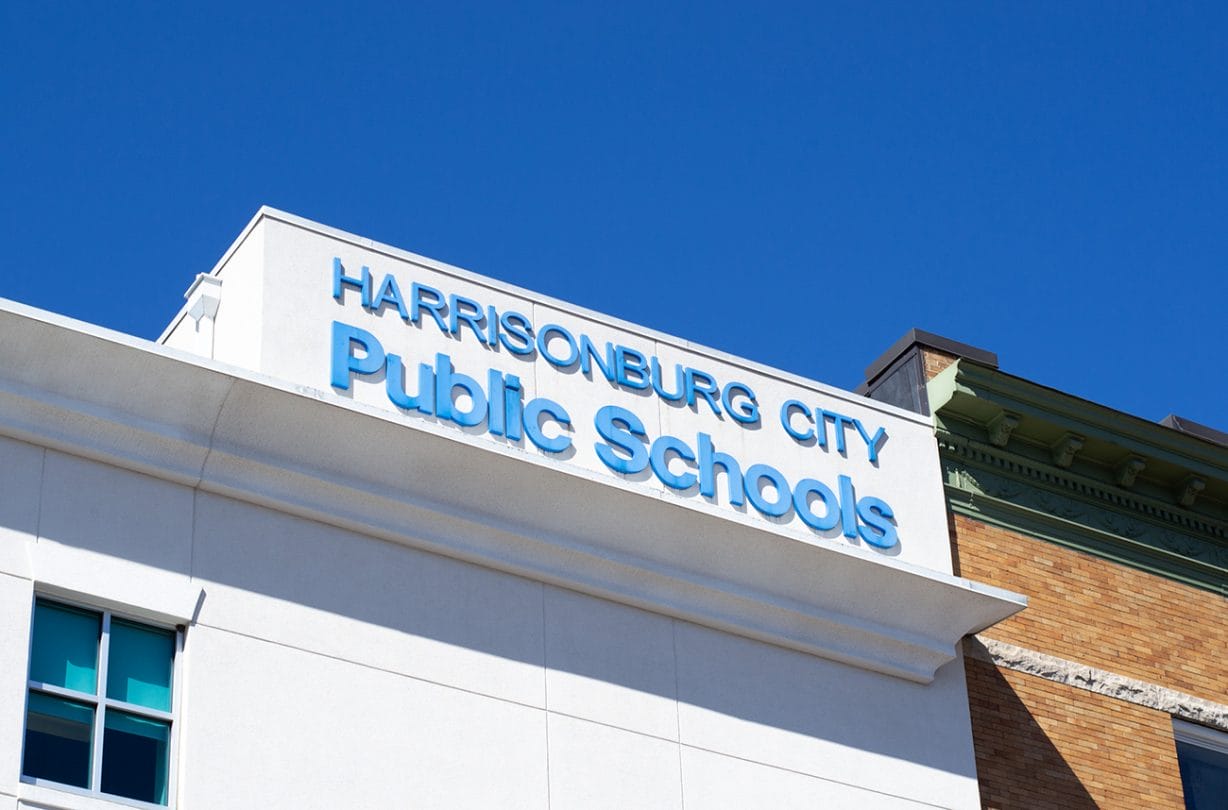By Randi B. Hagi, assistant editor
Harrisonburg City Public Schools are fine-tuning virtual learning, but officials are also laying the groundwork to bring more students — particularly the youngest ones — back into school buildings, perhaps next semester.
In their meeting Tuesday, the Harrisonburg School Board members heard presentations on wireless internet interventions for city students, and an “enhanced” reopening plan.
Superintendent Michael Richards said new guidance from the CDC indicates that, for now, the division’s current model – limiting in-person instruction to a select few who would be most disadvantaged by online learning – remains the best plan, given the area’s case count and test positivity rate.
However, he also said he would begin talking with school staff and families about bringing kindergarteners back sooner than other students.
“Our youngest students are struggling the most with learning online,” Richards said. And when that in-person option does become available, families will still be able to opt out if they’re uncomfortable.
“It needs to be a family decision,” he said.
Richards referred to the CDC’s “school metrics” webpage, which is updated daily and rates school districts based on various public health metrics. On Tuesday, Harrisonburg had a 14-day case count of 397.9 cases per 100,000 residents, which puts it in the “highest risk” category. The positivity rate of those tested is 6.5%, which is in the moderate risk range.
Rockingham County is currently at 215.4 cases per 100,000 for the last 14 days, which is also in the highest risk category. The county’s positivity rate is listed as 9%, which the CDC considers “higher risk.”
“When we decide to bring back students, this will be some of the data that we’ll be looking at very closely,” Richards said.
When the division enters the lower- to moderate-risk range – i.e., new cases drop below 50 per 100,000 and the positivity rate is below 8% – then the division will consider implementing the hybrid program officials envisioned this summer. That plan would bring up to half of the student body into school buildings at a time, on alternating days.
But Richards cautioned that they still don’t have guidance as to how long those thresholds would need to be met before such a transition would take place.
When it does, though, they’ll give staff and families at least three weeks’ notice before introducing the hybrid model.
“Observing trends will be vital in this because we need to give people time to switch and time to plan,” Richards said.
With the hybrid model, the division would continue to stress five key strategies the CDC recommends: mask use, social distancing, hand hygiene and respiratory etiquette, cleaning and disinfecting, and contact tracing in collaboration with the local health department.
School board member Obie Hill praised the CDC data as particularly useful when talking with families who question when their children will be able to return to school.
“The general usage of having charts and having different colors that are associated with the level of risk, I think it brings comfort,” Hill said.
One of Harrisonburg’s “special considerations,” Richards said, is JMU resuming in-person classes, which took place this week. After JMU first began the fall semester with in-person classes, new COVID-19 cases in the city reached an all-time high, prompting the university to move online for just over a month.
“We knew what direction it was going to go,” school board member Deb Fitzgerald said. “We just didn’t know how much … a lot of students never left, so I think it’s reasonable to say that that spike won’t be replicated.”
Fitzgerald did caution the school board about expectations for the spring semester, though, because college students might travel for the holidays before their classes resume in January, and the virus may behave differently during colder months.
Improving internet access
Charles Getz, the division’s community network specialist, gave an update on students’ internet access in the meeting. He’s been mapping service requests coming in from students, as well as the division’s responses – which include several “mega wifi” routers that are installed in vehicles and parked in neighborhoods that have a high concentration of students who need internet access.
Getz said they’ve also distributed more than 100 small, “mobile hotspot devices” to individual families and just received another shipment to hand out.
Students who still have trouble getting online will not be penalized academically.
“We are all showing grace towards each other,” Richards said. “We’ve had a really, really good attendance rate in terms of our online learning … in the mid-90s, most days. But we still have students who struggle.”
Also in the meeting:
- Andrea Early, executive director of school nutrition, said any families who did not sign up for school meals can still pick them up during their Tuesday drive-through. “Just come out,” she said. She added that the division has been serving about 2,400 bags of food – which include hot meals – every Tuesday night, as well as delivering some to families who can’t make it out.
- April Howard, chief officer for student support, announced the division will observe Unity Day on October 21 as part of bullying prevention month, and encouraged students and community members to wear orange that day to signify standing “united for kindness, acceptance, and inclusion.”
Journalism is changing, and that’s why The Citizen is here. We’re independent. We’re local. We pay our contributors, and the money you give goes directly to the reporting. No overhead. No printing costs. Just facts, stories and context. We’re also a proud member of the Virginia Press Association. Thanks for your support.

